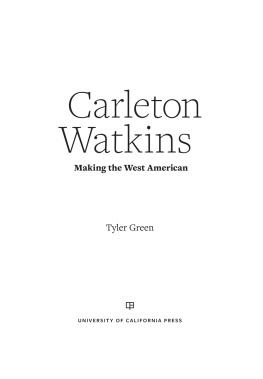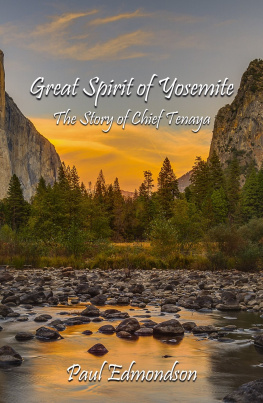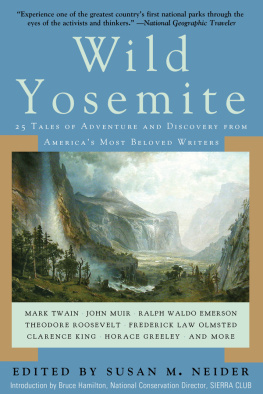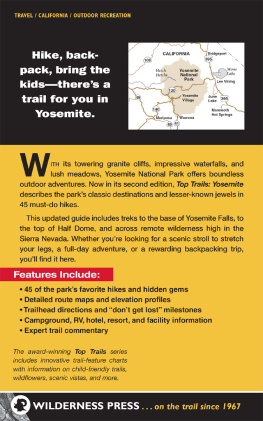Tyler Green - Carleton Watkins: Making the West American
Here you can read online Tyler Green - Carleton Watkins: Making the West American full text of the book (entire story) in english for free. Download pdf and epub, get meaning, cover and reviews about this ebook. year: 2018, publisher: University of California Press, genre: Art. Description of the work, (preface) as well as reviews are available. Best literature library LitArk.com created for fans of good reading and offers a wide selection of genres:
Romance novel
Science fiction
Adventure
Detective
Science
History
Home and family
Prose
Art
Politics
Computer
Non-fiction
Religion
Business
Children
Humor
Choose a favorite category and find really read worthwhile books. Enjoy immersion in the world of imagination, feel the emotions of the characters or learn something new for yourself, make an fascinating discovery.
- Book:Carleton Watkins: Making the West American
- Author:
- Publisher:University of California Press
- Genre:
- Year:2018
- Rating:3 / 5
- Favourites:Add to favourites
- Your mark:
Carleton Watkins: Making the West American: summary, description and annotation
We offer to read an annotation, description, summary or preface (depends on what the author of the book "Carleton Watkins: Making the West American" wrote himself). If you haven't found the necessary information about the book — write in the comments, we will try to find it.
Best Books of 2018The Guardian
Gold Medal for Contribution to Publishing, 2018 California Book Awards
Carleton Watkins (18291916) is widely considered the greatest American photographer of the nineteenth century and arguably the most influential artist of his era. He is best known for his pictures of Yosemite Valley and the nearby Mariposa Grove of giant sequoias.
Watkins made his first trip to Yosemite Valley and Mariposa Grove in 1861 just as the Civil War was beginning. His photographs of Yosemite were exhibited in New York for the first time in 1862, as news of the Unions disastrous defeat at Fredericksburg was landing in newspapers and while the Matthew Brady Studios horrific photographs of Antietam were on view. Watkinss work tied the West to Northern cultural traditions and played a key role in pledging the once-wavering West to Union.
Motivated by Watkinss pictures, Congress would pass legislation, later signed by Abraham Lincoln, that preserved Yosemite as the prototypical national park, the first such act of landscape preservation in the world. Carleton Watkins: Making the West American includes the first history of the birth of the national park concept since pioneering environmental historian Hans Huths landmark 1948 Yosemite: The Story of an Idea.
Watkinss photographs helped shape Americas idea of the West, and helped make the West a full participant in the nation. His pictures of California, Oregon, and Nevada, as well as modern-day Washington, Utah, and Arizona, not only introduced entire landscapes to America but were important to the development of American business, finance, agriculture, government policy, and science. Watkinss clients, customers, and friends were a veritable whos who of Americas Gilded Age, and his connections with notable figures such as Collis P. Huntington, John and Jessie Benton Frmont, Eadweard Muybridge, Frederick Billings, John Muir, Albert Bierstadt, and Asa Gray reveal how the Gilded Age helped make todays America.
Drawing on recent scholarship and fresh archival discoveries, Tyler Green reveals how an artist didnt just reflect his time, but acted as an agent of influence. This telling of Watkinss story will fascinate anyone interested in American history; the West; and how art and artists impacted the development of American ideas, industry, landscape, conservation, and politics.
Tyler Green: author's other books
Who wrote Carleton Watkins: Making the West American? Find out the surname, the name of the author of the book and a list of all author's works by series.








